26 Dec 9000 cfs … whatever. Bring it on: A Geyersville Update

Geyserville Bridge Project did great with HIGH WATER – 9000 cfs.
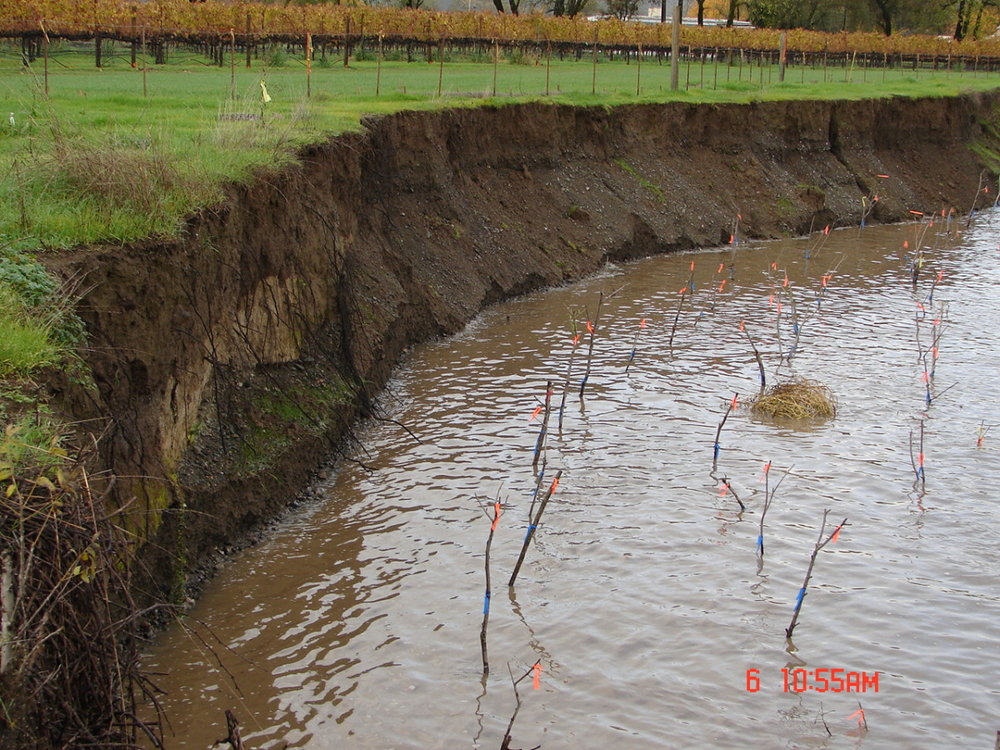 Big storms hit Northern California last week. There was a lot of fear and speculation about how the project would survive when the Russian River “ran really high”. Well, the “proof is in the pudding” as they say. There have been a couple of big storms in December but the highest flows were encountered on the week just before Christmas.
Big storms hit Northern California last week. There was a lot of fear and speculation about how the project would survive when the Russian River “ran really high”. Well, the “proof is in the pudding” as they say. There have been a couple of big storms in December but the highest flows were encountered on the week just before Christmas.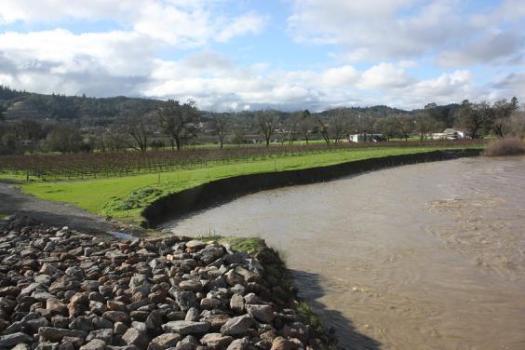
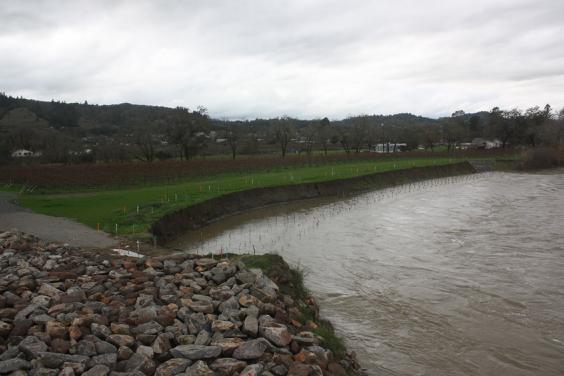
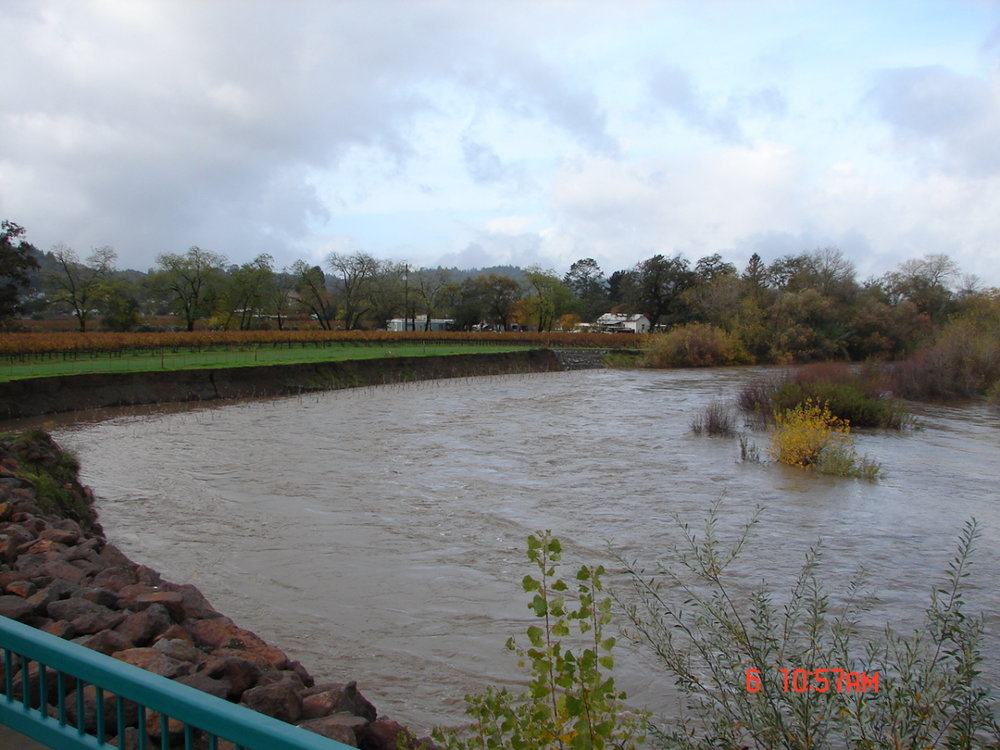 The rains started on Friday, December 17, and by 2:15 on December 22 the river peaked at an estimated 9250 cfs (it was measured 7500 cfs at Cloverdale (9 miles upstream) and at 11,000 cfs at Healdsburg (6-7 miles downstream).
The rains started on Friday, December 17, and by 2:15 on December 22 the river peaked at an estimated 9250 cfs (it was measured 7500 cfs at Cloverdale (9 miles upstream) and at 11,000 cfs at Healdsburg (6-7 miles downstream).  You can understand the concerns – how will some relatively “puny” rock vanes protect the highway and bridge during high water, when the vanes and longitudinal stone toe protection (LSTP) are completely overtopped? Well, during this last storm the vanes, LSTP and our constructed floodplain bench were completely under 5-6 feet of water.
You can understand the concerns – how will some relatively “puny” rock vanes protect the highway and bridge during high water, when the vanes and longitudinal stone toe protection (LSTP) are completely overtopped? Well, during this last storm the vanes, LSTP and our constructed floodplain bench were completely under 5-6 feet of water.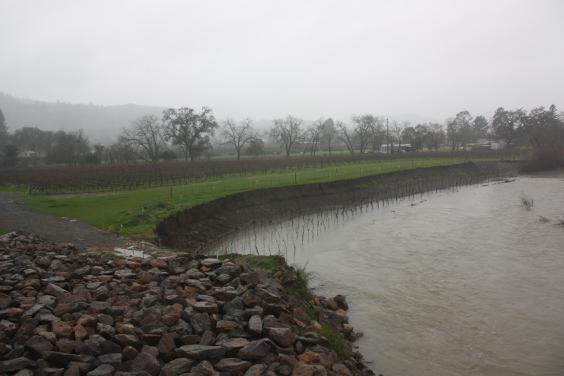 The thing that is obvious from the series of photos here (captured from the Caltrans webcam at www.dot.ca.gov/dist4/128russianriver/) is that the flow velocities in contact with the bank were negligible. No velocity, no tractive forces, no bank erosion.
The thing that is obvious from the series of photos here (captured from the Caltrans webcam at www.dot.ca.gov/dist4/128russianriver/) is that the flow velocities in contact with the bank were negligible. No velocity, no tractive forces, no bank erosion.
So, it looks like the thalweg management is working as planned.
Make a note that bendway weirs instead of rock vanes may have been an even better option for a river the size of the Russian. However, given the constraints during construction (fish were soon to migrate, we couldn’t excavate into the sandbars etc.) the rock vanes were a good choice. It is really awesome to see the vanes working under that much water.
For more information on redirective river training measures see NCHRP Report 544 and/ or ESenSS. https://www.esenss.com/contents.htm
Comments? Questions? Let us know in the section below.
